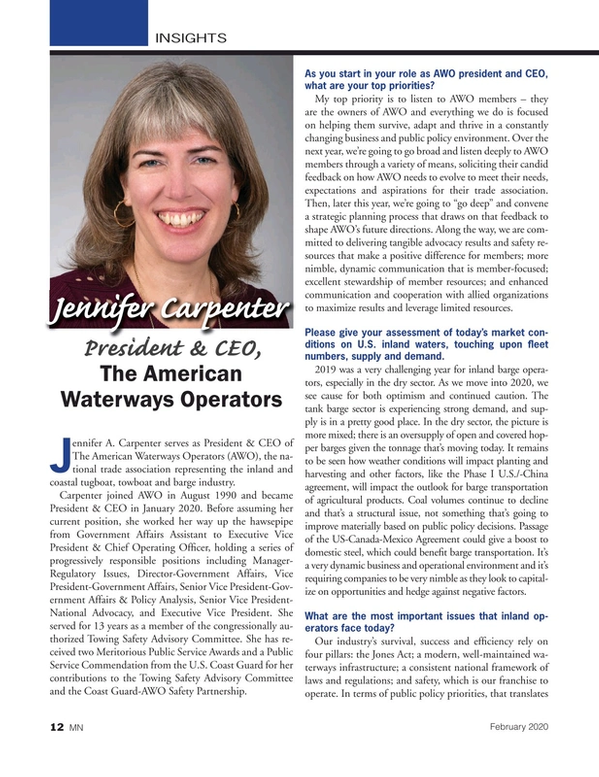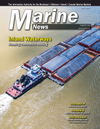
Insights: Jennifer Carpenter, AWO President & CEO
Jennifer A. Carpenter serves as President & CEO of The American Waterways Operators (AWO), the national trade association representing the inland and coastal tugboat, towboat and barge industry. Carpenter joined AWO in August 1990 and became President & CEO in January 2020. Before assuming her current position, she worked her way up the hawsepipe from Government Affairs Assistant to Executive Vice President & Chief Operating Officer, holding a series of progressively responsible positions including Manager-Regulatory Issues, Director-Government Affairs, Vice President-Government Affairs, Senior Vice President-Government Affairs & Policy Analysis, Senior Vice President-National Advocacy, and Executive Vice President. She served for 13 years as a member of the congressionally authorized Towing Safety Advisory Committee. She has received two Meritorious Public Service Awards and a Public Service Commendation from the U.S. Coast Guard for her contributions to the Towing Safety Advisory Committee and the Coast Guard-AWO Safety Partnership.
As you start in your role as AWO president and CEO, what are your top priorities?
My top priority is to listen to AWO members – they are the owners of AWO and everything we do is focused on helping them survive, adapt and thrive in a constantly changing business and public policy environment. Over the next year, we’re going to go broad and listen deeply to AWO members through a variety of means, soliciting their candid feedback on how AWO needs to evolve to meet their needs, expectations and aspirations for their trade association. Then, later this year, we’re going to “go deep” and convene a strategic planning process that draws on that feedback to shape AWO’s future directions. Along the way, we are committed to delivering tangible advocacy results and safety resources that make a positive difference for members; more nimble, dynamic communication that is member-focused; excellent stewardship of member resources; and enhanced communication and cooperation with allied organizations to maximize results and leverage limited resources.
Please give your assessment of today’s market conditions on U.S. inland waters, touching upon fleet numbers, supply and demand.
2019 was a very challenging year for inland barge operators, especially in the dry sector. As we move into 2020, we see cause for both optimism and continued caution. The tank barge sector is experiencing strong demand, and supply is in a pretty good place. In the dry sector, the picture is more mixed; there is an oversupply of open and covered hopper barges given the tonnage that’s moving today. It remains to be seen how weather conditions will impact planting and harvesting and other factors, like the Phase I U.S./-China agreement, will impact the outlook for barge transportation of agricultural products. Coal volumes continue to decline and that’s a structural issue, not something that’s going to improve materially based on public policy decisions. Passage of the US-Canada-Mexico Agreement could give a boost to domestic steel, which could benefit barge transportation. It’s a very dynamic business and operational environment and it’s requiring companies to be very nimble as they look to capitalize on opportunities and hedge against negative factors.
What are the most important issues that inland operators face today?
Our industry’s survival, success and efficiency rely on four pillars: the Jones Act; a modern, well-maintained waterways infrastructure; a consistent national framework of laws and regulations; and safety, which is our franchise to operate. In terms of public policy priorities, that translates into defending the Jones Act and decisively defeating attempts to waiver, weaken or water down the law; passing a biennial Water Resources Development Act (WRDA) bill and changing the cost-share for inland waterways projects to be consistent with that used for deep-draft navigation; ensuring that the federal government, and not a patchwork of state and local regulations, governs the operations of vessels in interstate commerce; and working with the Coast Guard to ensure that Subchapter M is implemented consistency and enforced robustly.
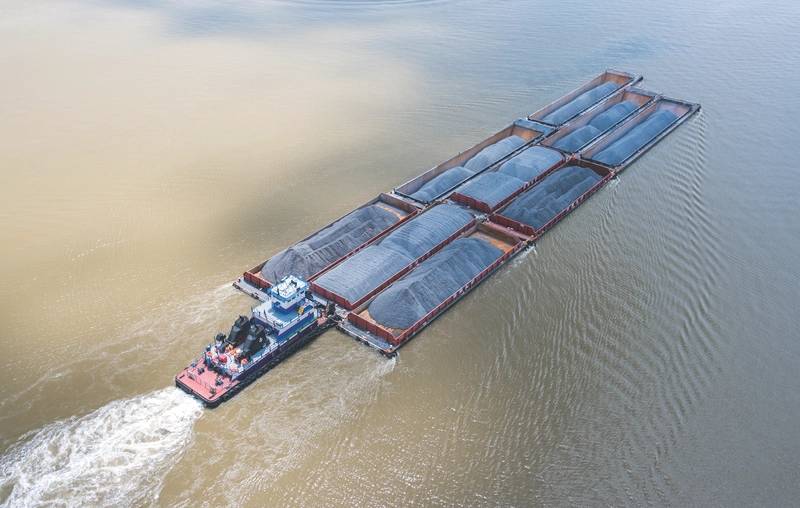 © Tak Inaba / Adobe Stock
© Tak Inaba / Adobe Stock
As opponents try to chip away at the Jones Act’s fundamentals, where does AWO fit into that discussion, and how are you involved in the debate?
There is no higher priority for AWO than safeguarding the Jones Act, which is the statutory foundation of our industry: it’s literally the basis for every job our members provide and every dollar they invest in vessels to serve our nation’s domestic commerce. AWO works closely with allied stakeholders through the American Maritime Partnership, the pro-Jones Act industry coalition that brings together vessel owners, shipyards, labor, pro-defense organizations, and others to educate Congress, the Administration, the media and the public about the importance of the Jones Act and the domestic maritime industry to the security of our country. I find it ironic that Jones Act opponents have seized on the 100th anniversary of the law this year to push their case that the law’s time has passed. I think a look at today’s geopolitical situation supports the exact opposite point: the Jones Act is more relevant than ever to maintaining our ability to keep economically critical commerce flowing.
Many stakeholders tend to focus on the blue water aspect of the Jones Act, but the threat to the inland and workboat sectors is just as great. Would you agree?
Absolutely. The Jones Act is not a blue water issue, it’s an issue for the American maritime industry as a whole – of which the inland and workboat sectors are the largest part! Anyone who thinks our strategic competitors wouldn’t have an interest – and wouldn’t have the ability – to control navigation on our inland waterways needs to do some reading about the Maritime Silk Road, just to give one example. That’s not a xenophobic statement – I studied Chinese and Asian studies in college! The fact is that control of the U.S. inland waterways system is vital to the health of the American economy. Our 95,000 miles of coastline and 25,000 miles of navigable waterways are a key reason for our superpower status. We’d be incredibly short-sighed to think other nations don’t realize that and wouldn’t jump at the chance to establish a foothold in the U.S. maritime industry if we let them.
With Subchapter M in effect for some time now, please describe how Sub M is impacting the value of the Responsible Carrier Program (RCP). How many run RCP in parallel with Subchapter M? Does it make any operational or financial sense to do so?
I think the most fundamental question about Sub M is how it’s impacting the safety of our industry and achieving the promise of raising the regulatory floor in our industry. Sub M has already had some significant positive effects: it’s closed the door on dual Coast Guard- Occupational Safety and Health Administration (OSHA) jurisdiction over towing vessels and reduced our industry’s vulnerability to reactive legislation or regulation by given Congress more confidence that there’s a comprehensive regulatory framework in place. But the jury is still out on whether the Coast Guard is going to enforce Sub M proactively and hold all operators to its standards, which have been in effect since July 2018 despite the fact that we’ve got 2.5 years left to go in the certificate of inspection (COI) phase-in process. Our two big messages for the Coast Guard right now on Sub are proactive enforcement and consistent implementation.
As for the RCP, all AWO members, regardless of whether they’re using the Towing Safety Management System (TSMS option or the Coast Guard option, comply with either the RCP or an equivalent safety management system, such as the ISM Code. If you’re using the TSMS option for Sub M compliance, the RCP doesn’t impose any additional requirements or costs beyond what you’re already doing for Sub M/TSMS compliance. AWO members have been clear that duplicative audits don’t add any value, so our Board of Directors has been deliberate in making sure that the RCP doesn’t impose any requirements on a TSMS company or vessel. Now, there are some members who are using the Coast Guard option and asking whether, in this age of customer audits,Ship Inspection Report Program (SIRE), TMSA, etc., it still makes sense for AWO to require RCP or SMS compliance as a condition of membership. That’s the kind of tough question we’ll need to dig into as we begin this year of deep listening and member dialogue and convene a new strategic planning process. I’m not going to prognosticate about how that or any specific member dialogue is going to come out; what I want to do is set a tone of openness to diverse thinking so that all members feel comfortable putting their perspective on the table. In the end, those decisions will be made by members, for the benefit of members, and while we’ll never have unanimity of thinking among such a diverse industry, I’m confident we’ll work through differences and come up with good decisions that enjoy broad support from across the AWO membership. And, it starts with respectful listening and candid dialogue.
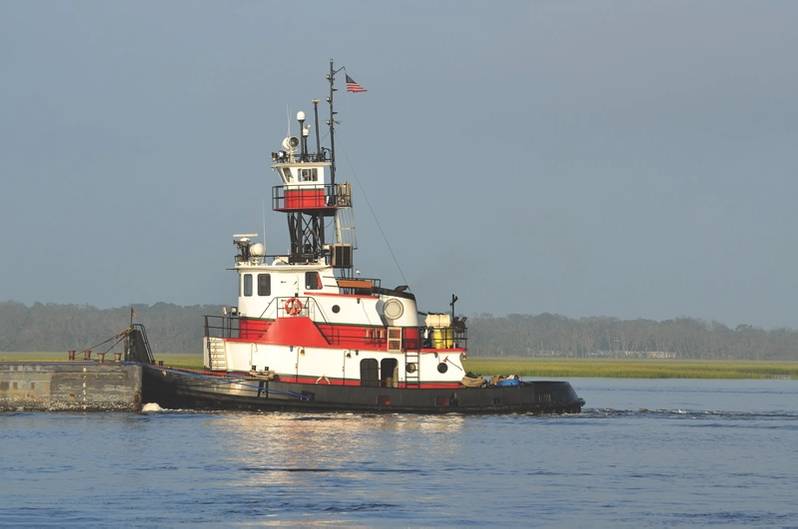 © itsallgood / Adobe Stock
© itsallgood / Adobe Stock
Most stakeholders would agree that at least the very foundation of Sub M rules and SMS systems stems from RCP. That said, now some time into subchapter M, is there a future – a need – for RCP?
There is absolutely a need for industry safety leadership, and for a culture of safety that goes beyond regulatory compliance. AWO’s current strategic plan calls for us to “lead and support members in continuously improving safety, security and environmental stewardship.” I don’t see that changing, because safety is so fundamental to our industry’s viability, efficiency and profitability. I think the questions AWO members are going to be wrestling with going forward are: What does that look like today? How do we most effectively demonstrate that safety leadership going forward, and support AWO members in being safety leaders? Times have changed since the RCP was established in 1994, or became a condition of AWO membership in 2000; we need to look critically at everything we do with an eye toward leading and supporting members in their safety journey.
The Vessel Incidental Discharge Act (VIDA) passed and has simplified both the vessel discharge and enforcement schemes. How was AWO involved in this effort and are you generally pleased with the outcome? Did you get everything you wanted?
The passage of VIDA was a landmark achievement for the maritime industry that increases certainty, reduces legal vulnerability for vessel owners and mariners, and paves the way for replacement of the Vessel General Permit and its hundred-plus state conditions imposed by more than two dozen states with a national framework jointly administered by the Environmental Protection Agency (EPA) and the Coast Guard. It also provides permanent regulatory relief for fishing vessels and vessels under 79 feet. AWO led a broad, diverse coalition of stakeholders that included vessel owners, labor unions, shippers, ports and other organizations, and worked with a bipartisan array of friends and champions on Capitol Hill to get this important legislation passed at the end of the 115th Congress. Like all complex legislation, it included compromises, but we think it’s a win-win for maritime commerce and the marine environment.
Of course, passing VIDA was step one. Step two is implementing it, and we’ll soon have our first public opportunity to assess how well that process is going when EPA publishes a notice of proposed rulemaking establishing standards for vessel discharges sometime this quarter. We’ll need to give that proposal a critical review and provide detailed comments to help the agency finalize the rule by the statutory deadline of December 2020. Then, the Coast Guard will have two years to publish regulations specifying how the discharge standards must be met, documented, inspected and enforced. It will be important for all the maritime stakeholders who worked so hard to get VIDA passed to now engage the regulatory process to make sure it’s implemented practically and effectively.
As the rivers compete against road and rail for federal funding resources, what’s AWO’s strategy to help secure a bigger piece of the pie for America’s inland waterways system?
One: take a big-tent approach to working with allied organizations, shippers and other stakeholders to educate policymakers on the benefits of waterways transportation to our nation’s economy, security, environment and quality of life. Two: make sure government policies don’t interfere with the inherent efficiency of this industry. Our members know how to run boats and barges safely, securely and efficiently. We need to make sure the actions of government support them in doing that, rather than get in the way.
What do you see as the top regulatory reform needed today that would best help inland waterway operators?
Change the cost-share for inland waterway navigation projects to 75% federal, 25% Inland Waterways Trust Fund. That would create a significant infusion of capital into lock and dam modernization that’s needed to keep traffic moving efficiently on the rivers.
U.S. waterways infrastructure is in urgent need of modernization and repair. Where have you seen greatest progress, and where do you continue to see greatest need?
Changing the cost-share will ensure that we have more capital available to deal with the many needs throughout the system, which is why it’s so critical, and the Inland Waterways Users Board has served a very important function over the years in helping the Corps to prioritize projects. I do have to put in a plug for the NESP (National Ecosystem Sustainability Program), which was authorized more than a decade ago to modernize the locks and dams on the Upper Mississippi River system. We are long past due to move this important project forward, starting with allocating the funding needed for pre-construction, engineering and design work.
How were AWO members impacted by sustained high water levels in 2019? What needs to be done to help alleviate the problem in the years ahead?
The wet weather and record-long high water of 2019 did a triple whammy on our industry. First, heavy rainfall delayed spring planting, reducing demand for fertilizer and then reducing output of agricultural commodities. Second, sustained high water conditions disrupted barge transportation and caused significant challenges to navigation. It’s an incredible testament to the professionalism and skill of our mariners that they performed as safely as they did in these incredibly challenging conditions. And third, when the water fell, shoaling created acute dredging challenges that threated to close major segments of the river system again. Going forward, we can’t control the weather, but we need to work with Congress, the Corps of Engineers and the Coast Guard to plan for foreseeable events: there will be high water, there will be low water, we will need dredging, and we need to have plans in place to activate when they occur. Of course, plans need to be flexible enough to change given changing circumstances, but planning and good communication are essential.
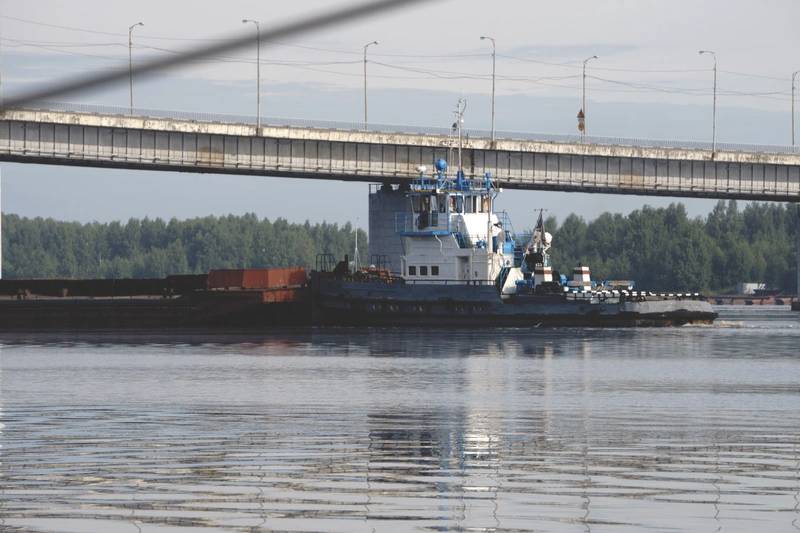 © baon / Adobe Stock
© baon / Adobe Stock
AWO in 2018 released “Cyber Risk Management: Best Practices for the Towing Industry”. What did you learn in creating the document, and what do you see as the key takeaways? Put in perspective the cyber security risk faced by your members today.
Cyber risk management is going to be increasingly important to all businesses – and private citizens, for that matter. For the maritime industry, we’ve got not only the known risks that all businesses face – denial of service, disruptions to business systems and continuity – but we’re also operating vessels with safety-critical systems that, if compromised accidentally or maliciously, could cause fatalities, pollution, damage to critical infrastructure – a host of bad consequences. It’s important not to be overwhelmed by the magnitude of the challenge and think, “If the federal government or Equifax can get hacked, what can I do to protect my business?” The important thing is to get started, assess your risks, practice good cyber hygiene, and have a framework to build on to address the risks most relevant to your operations.
Many cite an aging demographic working on our waterways and a lack of mid-career talent to bridge the most experienced with the least. When you look at employment opportunities, what do you see? What should companies be doing to present attractive employment opportunities?
Creating a pipeline of well-qualified, well-trained, drug-free mariners to grow through the ranks and take leadership roles on our vessels and in shoreside positions is a long-term strategic imperative for our industry. To do that, we need to think outside the box and 1) look beyond traditional sources of employees for our industry and 2) understand what prospective employees need to make this industry more attractive to them. We have a lot going for us: great pay, excellent benefits, meaningful work, the flexibility to live where you want and work someone else, extended time off – but we need to get the word out to populations segments who may not have heard about us or thought about pursuing employment in our industry, and pay attention to what they’re telling us would make them more inclined to stay and build their careers with us.
Please describe the shape and size of AWO’s current membership. What portion of the U.S.-flag fleet are AWO members?
AWO has about 330 member companies today: about two-thirds of those are carrier members, companies that operate tugboats, towboats and barges in the U.S. domestic trade, inland, coastal and harbor. The other third are affiliate members, who provide important services to carrier members, from tankering service companies to shipyards to equipment suppliers, insurers, attorneys, consultants, etc. AWO carrier members account for the vast majority of the barge tonnage and a substantial majority of the towing vessel horsepower in the industry. Going forward, we want to take good care of the members we have and also attract new members, because the larger and more diverse our ranks, the more formidable an advocacy fighting force we’ll be. This is an exciting time to be an AWO member because over the next couple of years we’re going to be working together to co-create our association’s future. I want members to know that their voices matter in that process, and that they will be listened to, heard, and respected as they share their views on how AWO needs to evolve to meet their needs going forward. And, I want non-members to know that not just AWO, but our entire industry, will be stronger, if they join us and become part of that conversation, too. A strong, dynamic AWO is not only good for our industry, I believe it’s essential to helping companies and our industry navigate a complex, rapidly changing business and public policy environment.
What are the three primary reasons to join AWO, and what benefits does membership provide?
One: Because the threats to the efficiency and viability of our business are real, and AWO is our industry’s advocate with Congress, the Coast Guard, other federal agencies and states. If AWO didn’t exist, the industry would need to create it, because the alternative is to fend for ourselves in a perilous public policy environment. Two: Because AWO provides information and education, safety resources and forums, individual member support and the opportunity to learn from industry peers that help you run your business better. And, three, because AWO listens to, respects, and fights for every member, no matter their size. AWO gives small companies a larger voice and small companies make AWO a stronger advocate for the entire industry.
The AWO value proposition is to deliver advocacy results and safety resources that support members in doing the important work of being the nation’s safest, most environmentally friendly, most efficient form of cargo transportation. Your membership gives us the strength to deliver results that benefit both your company individually, and our industry as a whole.
Read Insights: Jennifer Carpenter, AWO President & CEO in Pdf, Flash or Html5 edition of February 2020 Marine News
Other stories from February 2020 issue
Content
- Insights: Jennifer Carpenter, AWO President & CEO page: 12
- The Federal Government’s 2020 Inland Impact page: 22
- 2020 Vision page: 26
- Sub M Progress – an Update page: 28
- Marine News' 2020 ATB Report page: 32
- MarTID 2020: Take the Global Maritime Training Survey page: 40
- C&C Building Towboat Trio for Hines Furlong page: 42
- Better Blasting: Send in the Robots page: 50
- Spending More Time at Sea page: 53

